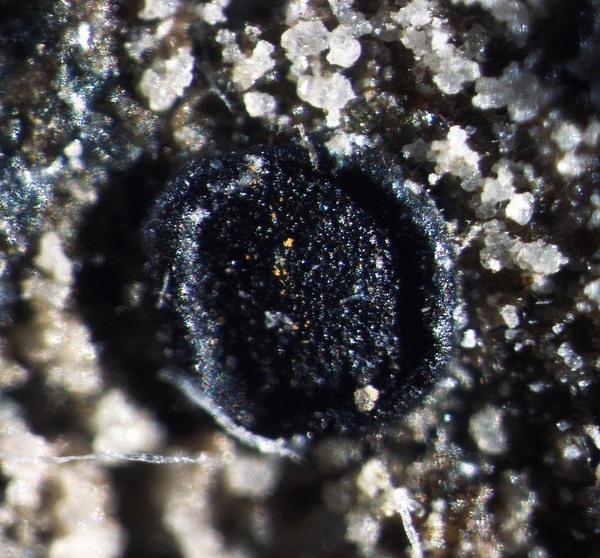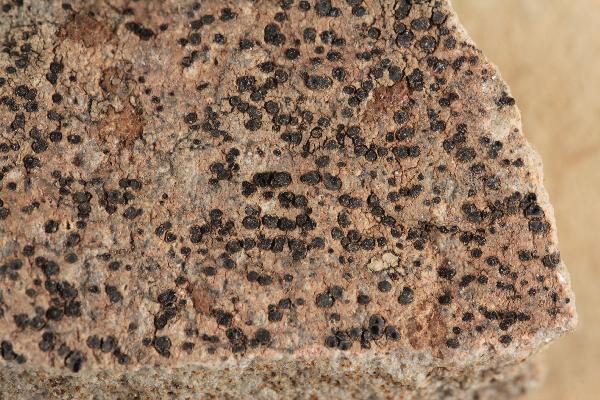Lecidella anomaloides (A. Massal.) Hertel & H. Kilias
in Hawksworth & al., Lichenologist, 12: 107, 1980. Basionym: Lecidea anomaloides A. Massal. - Ric. Auton. Lich. Crost.: 72, 1852.
Synonyms: Biatora pungens Körb.; Biatorina anomaloides (A. Massal.) Jatta; Catillaria anomaloides (A. Massal.) Lettau; Lecidea elaeochroma var. pungens (Körb.) Th. Fr.; Lecidea goniophila auct. non Flörke; Lecidea pilularis (Ach.) Fr.; Lecidea pungens (Körb.) Nyl.; Lecidella cyanea Körb.; Lecidella goniophila auct.; Lecidella pilularis (Ach.) Stein; Lecidella pungens (Körb.) Körb.
Distribution: N - VG (Castello 2002, Martellos & Castello 2004), Ven (Lazzarin 2000b), TAA (Knoph & Leuckert 2000, Nascimbene & al. 2022), Lomb (Valcuvia & al. 2003), Piem (Isocrono & Falletti 1999, Valcuvia 2002, 2002b, Isocrono & al. 2003, Gheza & Nascimbene 2024), VA (Piervittori & Isocrono 1999, Piervittori & al. 2004), Emil (Fariselli & al. 2020), Lig (Watson 2014). C - Tosc, Sar (Knoph & Leuckert 2000). S - Camp (Ricciardi & al. 2000), Si (Ottonello & Romano 1997, Ottonello & al. 2011).
Description: Thallus crustose, thinly episubstratic, often poorly evident, up to 0.2 mm thick, continuous to indistinctly rimose-areolate or granular, pale to dark grey or green-grey. Apothecia lecideine, black, shiny at least when young, sessile, constricted at base, 0.4-0.8(-1.5) mm across, with a flat to weakly convex disc and a persistent, glossy, often sinuous proper margin. Proper exciple 50-75 µm wide laterally, pigmented throughout, dark brown to blackish green in outer part, paler brown within, without crystals; epithecium brown K-, N-, without crystals; hymenium colourless, not inspersed with oil droplets, (40-)50-75(-90) µm high; paraphyses easily made free in K, simple, rarely anastomosing or branched, thickened at apex; hypothecium colourless to very pale brown (sometimes darker red-brown in older apothecia). Asci 8-spored, clavate, with an intensely K/I+ blue tholus penetrated by a faintly amyloid, broadly cylindrical axial mass, and a poorly developed ocular chamber, the wall K/I-, surrounded by a K/I+ blue outer layer, approaching the Lecanora-type. Ascospores 1-celled, hyaline, broadly ellipsoid to subglobose, 7-15 x (5-)6-8(-9) µm, with a thick, smooth wall, not halonate. Pycnidia globose, black, with a brown wall. Conidia thread-like, curved. Photobiont chlorococcoid. Spot tests: thallus K- or K+ yellow, C-, KC-, P- or P+ pale yellow. Chemistry: atranorin, sometimes in low amounts.Note: on steeply inclined to slightly rain-sheltered surfaces of hard, acid to base-rich, non-calciferous rocks.
Growth form: Crustose
Substrata: rocks
Photobiont: green algae other than Trentepohlia
Reproductive strategy: mainly sexual
Commonnes-rarity: (info)
Alpine belt: very rare
Subalpine belt: rare
Oromediterranean belt: rare
Montane belt: rare
Submediterranean belt: very rare
Padanian area: absent
Humid submediterranean belt: very rare
Humid mediterranean belt: absent
Dry mediterranean belt: absent
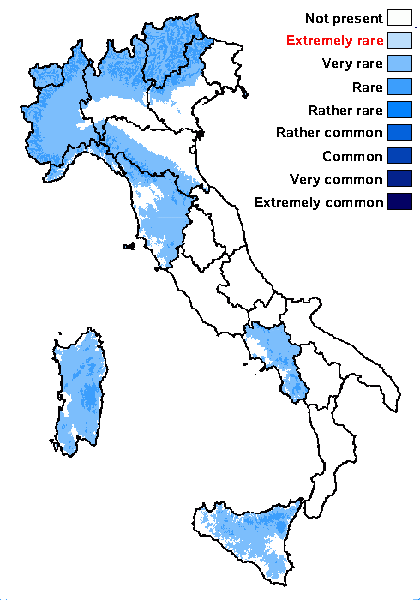
Predictive model
Herbarium samples
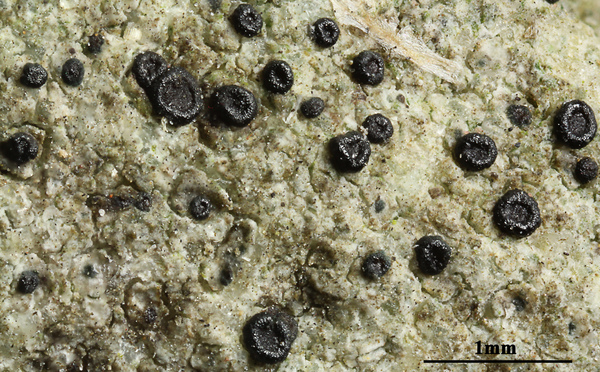

Felix Schumm - CC BY-SA 4.0
[19672], Germany, Baden-Württemberg, Stuttgart-Hohenheim, beim Botanischen Institut, 48.71081° N, 9.20847° E, 394 m, auf HCLQuarzkieselsteinen, TK 7221/3. Leg. et det. F. Schumm, 12.08.2017


Felix Schumm - CC BY-SA 4.0
[19672], Germany, Baden-Württemberg, Stuttgart-Hohenheim, beim Botanischen Institut, 48.71081° N, 9.20847° E, 394 m, auf HCLQuarzkieselsteinen, TK 7221/3. Leg. et det. F. Schumm, 12.08.2017
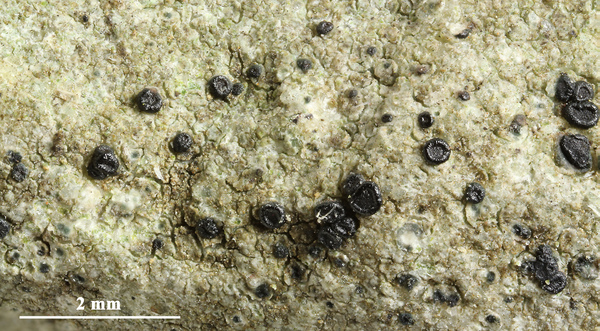

Felix Schumm - CC BY-SA 4.0
[19672], Germany, Baden-Württemberg, Stuttgart-Hohenheim, beim Botanischen Institut, 48.71081° N, 9.20847° E, 394 m, auf HCLQuarzkieselsteinen, TK 7221/3. Leg. et det. F. Schumm, 12.08.2017
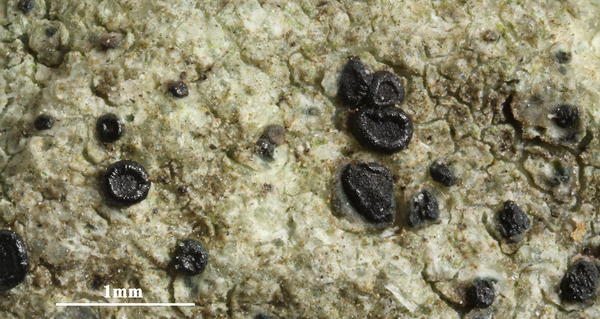

Felix Schumm - CC BY-SA 4.0
[19672], Germany, Baden-Württemberg, Stuttgart-Hohenheim, beim Botanischen Institut, 48.71081° N, 9.20847° E, 394 m, auf HCLQuarzkieselsteinen, TK 7221/3. Leg. et det. F. Schumm, 12.08.2017
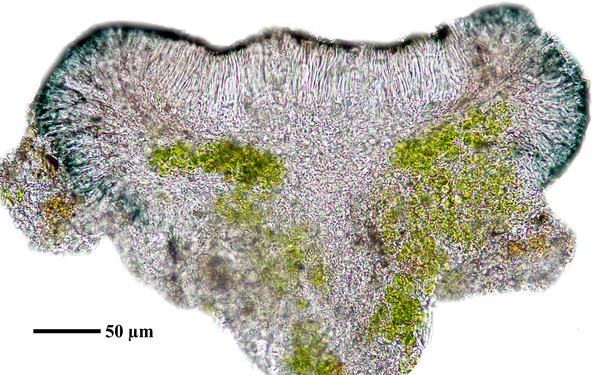

Felix Schumm - CC BY-SA 4.0
[19672], Germany, Baden-Württemberg, Stuttgart-Hohenheim, beim Botanischen Institut, 48.71081° N, 9.20847° E, 394 m, auf HCLQuarzkieselsteinen, TK 7221/3. Leg. et det. F. Schumm, 12.08.2017
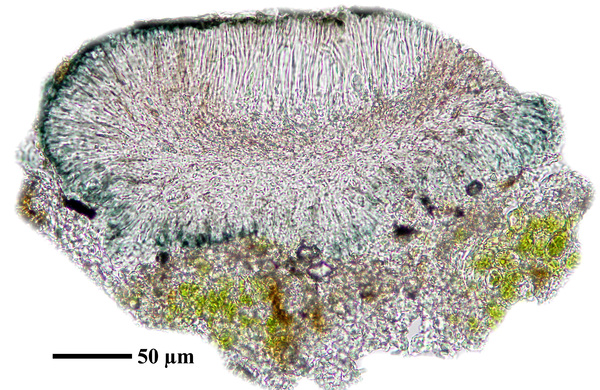

Felix Schumm - CC BY-SA 4.0
[19672], Germany, Baden-Württemberg, Stuttgart-Hohenheim, beim Botanischen Institut, 48.71081° N, 9.20847° E, 394 m, auf HCLQuarzkieselsteinen, TK 7221/3. Leg. et det. F. Schumm, 12.08.2017
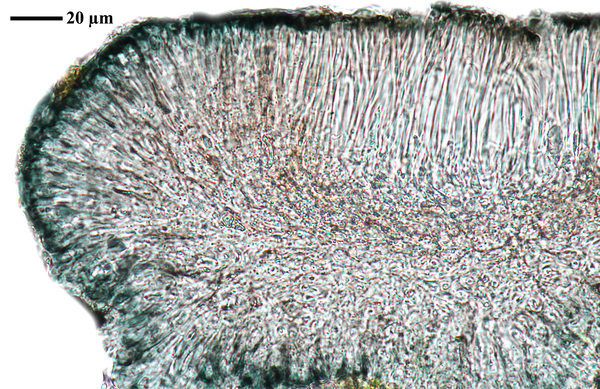

Felix Schumm - CC BY-SA 4.0
[19672], Germany, Baden-Württemberg, Stuttgart-Hohenheim, beim Botanischen Institut, 48.71081° N, 9.20847° E, 394 m, auf HCLQuarzkieselsteinen, TK 7221/3. Leg. et det. F. Schumm, 12.08.2017
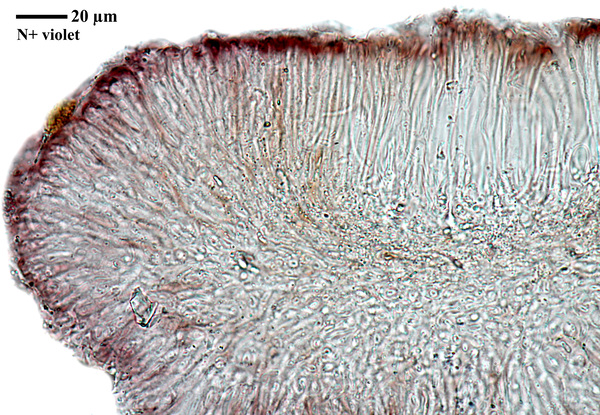

Felix Schumm - CC BY-SA 4.0
[19672], Germany, Baden-Württemberg, Stuttgart-Hohenheim, beim Botanischen Institut, 48.71081° N, 9.20847° E, 394 m, auf HCLQuarzkieselsteinen, TK 7221/3. Leg. et det. F. Schumm, 12.08.2017
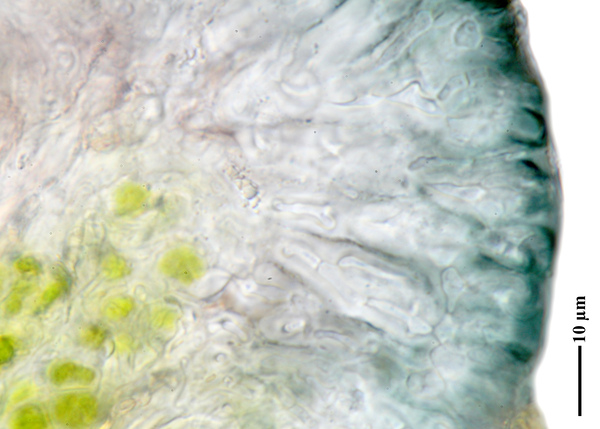

Felix Schumm - CC BY-SA 4.0
[19672], Germany, Baden-Württemberg, Stuttgart-Hohenheim, beim Botanischen Institut, 48.71081° N, 9.20847° E, 394 m, auf HCLQuarzkieselsteinen, TK 7221/3. Leg. et det. F. Schumm, 12.08.2017


Felix Schumm - CC BY-SA 4.0
[19672], Germany, Baden-Württemberg, Stuttgart-Hohenheim, beim Botanischen Institut, 48.71081° N, 9.20847° E, 394 m, auf HCLQuarzkieselsteinen, TK 7221/3. Leg. et det. F. Schumm, 12.08.2017
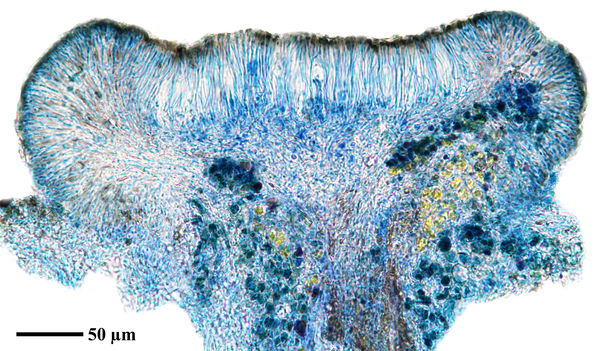

Felix Schumm - CC BY-SA 4.0
[19672], Germany, Baden-Württemberg, Stuttgart-Hohenheim, beim Botanischen Institut, 48.71081° N, 9.20847° E, 394 m, auf HCLQuarzkieselsteinen, TK 7221/3. Leg. et det. F. Schumm, 12.08.2017


Felix Schumm - CC BY-SA 4.0
[19672], Germany, Baden-Württemberg, Stuttgart-Hohenheim, beim Botanischen Institut, 48.71081° N, 9.20847° E, 394 m, auf HCLQuarzkieselsteinen, TK 7221/3. Leg. et det. F. Schumm, 12.08.2017
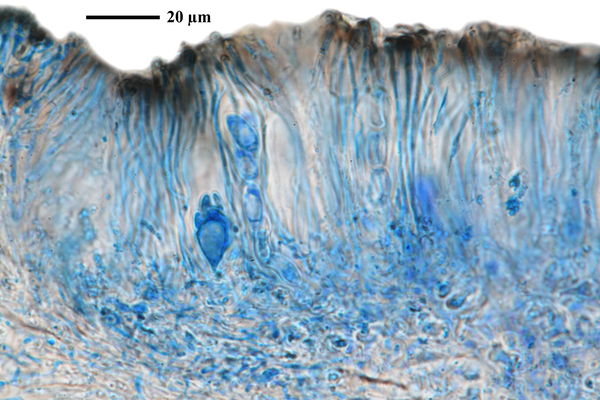

Felix Schumm - CC BY-SA 4.0
[19672], Germany, Baden-Württemberg, Stuttgart-Hohenheim, beim Botanischen Institut, 48.71081° N, 9.20847° E, 394 m, auf HCLQuarzkieselsteinen, TK 7221/3. Leg. et det. F. Schumm, 12.08.2017
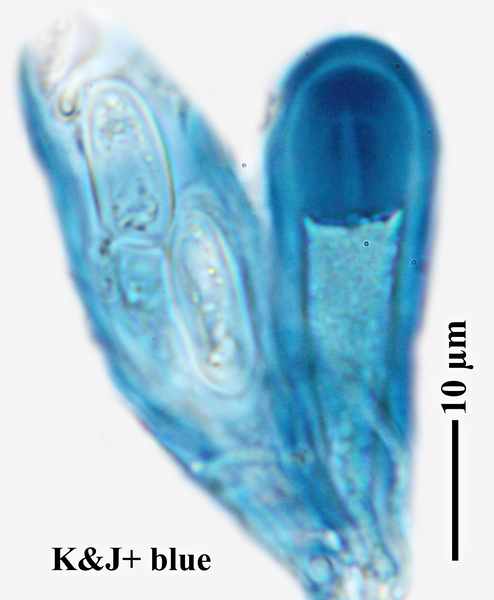

Felix Schumm - CC BY-SA 4.0
[19672], Germany, Baden-Württemberg, Stuttgart-Hohenheim, beim Botanischen Institut, 48.71081° N, 9.20847° E, 394 m, auf HCLQuarzkieselsteinen, TK 7221/3. Leg. et det. F. Schumm, 12.08.2017
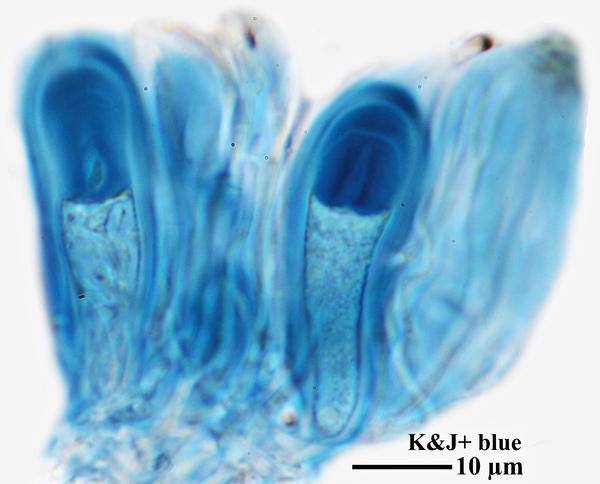

Felix Schumm - CC BY-SA 4.0
[19672], Germany, Baden-Württemberg, Stuttgart-Hohenheim, beim Botanischen Institut, 48.71081° N, 9.20847° E, 394 m, auf HCLQuarzkieselsteinen, TK 7221/3. Leg. et det. F. Schumm, 12.08.2017


Felix Schumm - CC BY-SA 4.0
[19672], Germany, Baden-Württemberg, Stuttgart-Hohenheim, beim Botanischen Institut, 48.71081° N, 9.20847° E, 394 m, auf HCLQuarzkieselsteinen, TK 7221/3. Leg. et det. F. Schumm, 12.08.2017


Felix Schumm - CC BY-SA 4.0
[19672], Germany, Baden-Württemberg, Stuttgart-Hohenheim, beim Botanischen Institut, 48.71081° N, 9.20847° E, 394 m, auf HCLQuarzkieselsteinen, TK 7221/3. Leg. et det. F. Schumm, 12.08.2017
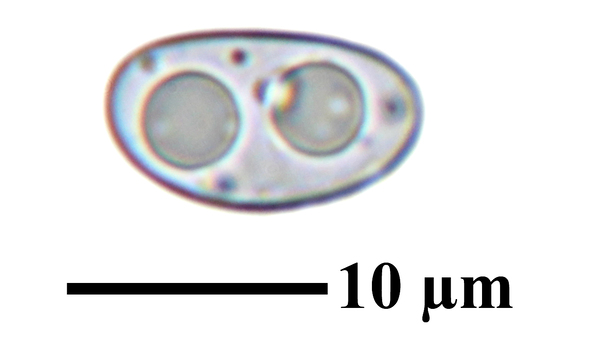

Felix Schumm - CC BY-SA 4.0
[19672], Germany, Baden-Württemberg, Stuttgart-Hohenheim, beim Botanischen Institut, 48.71081° N, 9.20847° E, 394 m, auf HCLQuarzkieselsteinen, TK 7221/3. Leg. et det. F. Schumm, 12.08.2017
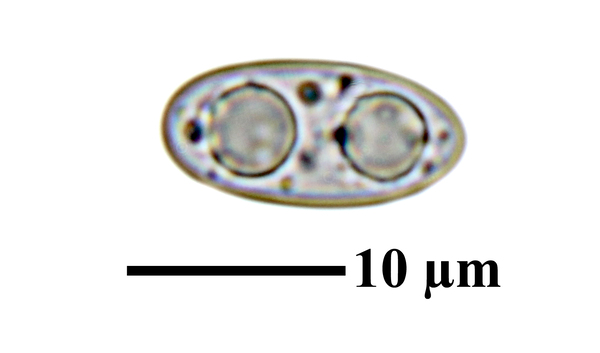

Felix Schumm - CC BY-SA 4.0
[19672], Germany, Baden-Württemberg, Stuttgart-Hohenheim, beim Botanischen Institut, 48.71081° N, 9.20847° E, 394 m, auf HCLQuarzkieselsteinen, TK 7221/3. Leg. et det. F. Schumm, 12.08.2017


Felix Schumm - CC BY-SA 4.0
[19672], Germany, Baden-Württemberg, Stuttgart-Hohenheim, beim Botanischen Institut, 48.71081° N, 9.20847° E, 394 m, auf HCLQuarzkieselsteinen, TK 7221/3. Leg. et det. F. Schumm, 12.08.2017


Felix Schumm - CC BY-SA 4.0
[19672], Germany, Baden-Württemberg, Stuttgart-Hohenheim, beim Botanischen Institut, 48.71081° N, 9.20847° E, 394 m, auf HCLQuarzkieselsteinen, TK 7221/3. Leg. et det. F. Schumm, 12.08.2017

Jacques Haine - Source: http://www.lichensmaritimes.org/index.php?task=fiche&lichen=1138&lang=en
France, Pointe de l'Armorique

Jacques Haine - Source: http://www.lichensmaritimes.org/index.php?task=fiche&lichen=1138&lang=en
France, Pointe de l'Armorique

Jacques Haine - Source: http://www.lichensmaritimes.org/index.php?task=fiche&lichen=1138&lang=en
France, Pointe de l'Armorique
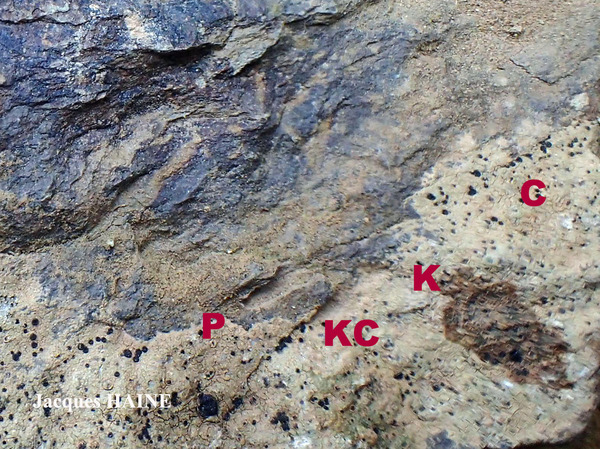
Jacques Haine - Source: http://www.lichensmaritimes.org/index.php?task=fiche&lichen=1138&lang=en
France, Pointe de l'Armorique
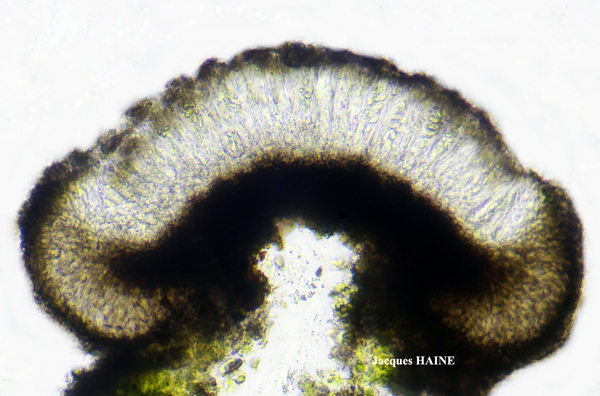
Jacques Haine - Source: http://www.lichensmaritimes.org/index.php?task=fiche&lichen=1138&lang=en
France, Pointe de l'Armorique
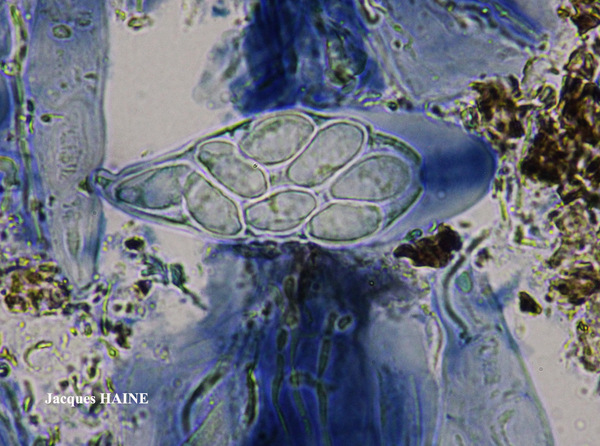
Jacques Haine - Source: http://www.lichensmaritimes.org/index.php?task=fiche&lichen=1138&lang=en
France, Pointe de l'Armorique
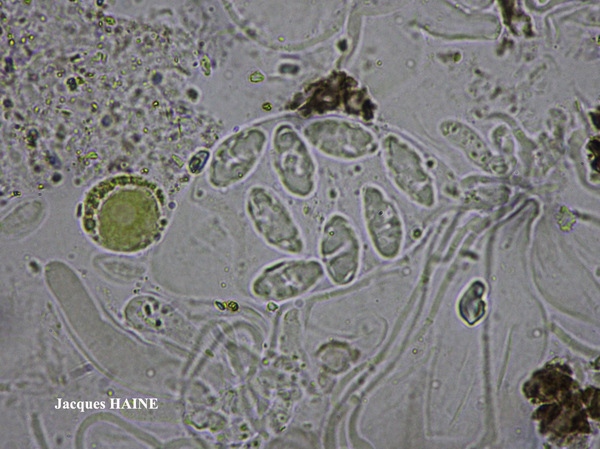
Jacques Haine - Source: http://www.lichensmaritimes.org/index.php?task=fiche&lichen=1138&lang=en
France, Pointe de l'Armorique
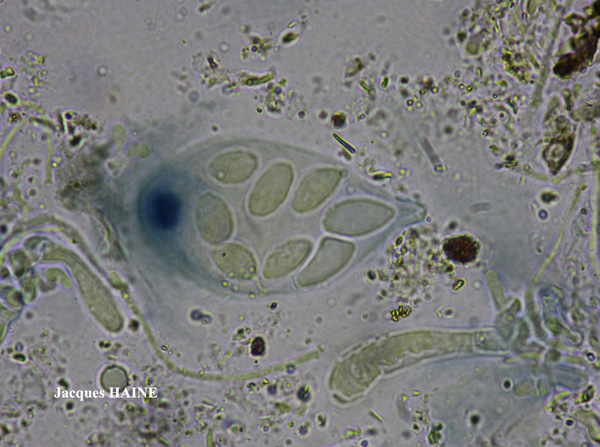
Jacques Haine - Source: http://www.lichensmaritimes.org/index.php?task=fiche&lichen=1138&lang=en
France, Pointe de l'Armorique
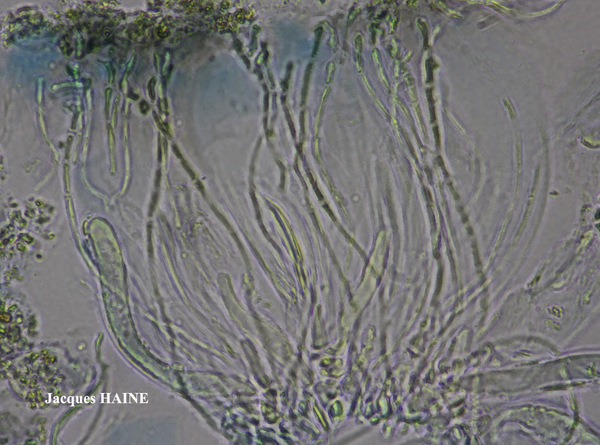
Jacques Haine - Source: http://www.lichensmaritimes.org/index.php?task=fiche&lichen=1138&lang=en
France, Pointe de l'Armorique
Growth form: Crustose
Substrata: rocks
Photobiont: green algae other than Trentepohlia
Reproductive strategy: mainly sexual
Commonnes-rarity: (info)
Alpine belt: very rare
Subalpine belt: rare
Oromediterranean belt: rare
Montane belt: rare
Submediterranean belt: very rare
Padanian area: absent
Humid submediterranean belt: very rare
Humid mediterranean belt: absent
Dry mediterranean belt: absent

Predictive model
| Herbarium samples |


Felix Schumm - CC BY-SA 4.0
[19672], Germany, Baden-Württemberg, Stuttgart-Hohenheim, beim Botanischen Institut, 48.71081° N, 9.20847° E, 394 m, auf HCLQuarzkieselsteinen, TK 7221/3. Leg. et det. F. Schumm, 12.08.2017


Felix Schumm - CC BY-SA 4.0
[19672], Germany, Baden-Württemberg, Stuttgart-Hohenheim, beim Botanischen Institut, 48.71081° N, 9.20847° E, 394 m, auf HCLQuarzkieselsteinen, TK 7221/3. Leg. et det. F. Schumm, 12.08.2017


Felix Schumm - CC BY-SA 4.0
[19672], Germany, Baden-Württemberg, Stuttgart-Hohenheim, beim Botanischen Institut, 48.71081° N, 9.20847° E, 394 m, auf HCLQuarzkieselsteinen, TK 7221/3. Leg. et det. F. Schumm, 12.08.2017


Felix Schumm - CC BY-SA 4.0
[19672], Germany, Baden-Württemberg, Stuttgart-Hohenheim, beim Botanischen Institut, 48.71081° N, 9.20847° E, 394 m, auf HCLQuarzkieselsteinen, TK 7221/3. Leg. et det. F. Schumm, 12.08.2017


Felix Schumm - CC BY-SA 4.0
[19672], Germany, Baden-Württemberg, Stuttgart-Hohenheim, beim Botanischen Institut, 48.71081° N, 9.20847° E, 394 m, auf HCLQuarzkieselsteinen, TK 7221/3. Leg. et det. F. Schumm, 12.08.2017


Felix Schumm - CC BY-SA 4.0
[19672], Germany, Baden-Württemberg, Stuttgart-Hohenheim, beim Botanischen Institut, 48.71081° N, 9.20847° E, 394 m, auf HCLQuarzkieselsteinen, TK 7221/3. Leg. et det. F. Schumm, 12.08.2017


Felix Schumm - CC BY-SA 4.0
[19672], Germany, Baden-Württemberg, Stuttgart-Hohenheim, beim Botanischen Institut, 48.71081° N, 9.20847° E, 394 m, auf HCLQuarzkieselsteinen, TK 7221/3. Leg. et det. F. Schumm, 12.08.2017


Felix Schumm - CC BY-SA 4.0
[19672], Germany, Baden-Württemberg, Stuttgart-Hohenheim, beim Botanischen Institut, 48.71081° N, 9.20847° E, 394 m, auf HCLQuarzkieselsteinen, TK 7221/3. Leg. et det. F. Schumm, 12.08.2017


Felix Schumm - CC BY-SA 4.0
[19672], Germany, Baden-Württemberg, Stuttgart-Hohenheim, beim Botanischen Institut, 48.71081° N, 9.20847° E, 394 m, auf HCLQuarzkieselsteinen, TK 7221/3. Leg. et det. F. Schumm, 12.08.2017


Felix Schumm - CC BY-SA 4.0
[19672], Germany, Baden-Württemberg, Stuttgart-Hohenheim, beim Botanischen Institut, 48.71081° N, 9.20847° E, 394 m, auf HCLQuarzkieselsteinen, TK 7221/3. Leg. et det. F. Schumm, 12.08.2017


Felix Schumm - CC BY-SA 4.0
[19672], Germany, Baden-Württemberg, Stuttgart-Hohenheim, beim Botanischen Institut, 48.71081° N, 9.20847° E, 394 m, auf HCLQuarzkieselsteinen, TK 7221/3. Leg. et det. F. Schumm, 12.08.2017


Felix Schumm - CC BY-SA 4.0
[19672], Germany, Baden-Württemberg, Stuttgart-Hohenheim, beim Botanischen Institut, 48.71081° N, 9.20847° E, 394 m, auf HCLQuarzkieselsteinen, TK 7221/3. Leg. et det. F. Schumm, 12.08.2017


Felix Schumm - CC BY-SA 4.0
[19672], Germany, Baden-Württemberg, Stuttgart-Hohenheim, beim Botanischen Institut, 48.71081° N, 9.20847° E, 394 m, auf HCLQuarzkieselsteinen, TK 7221/3. Leg. et det. F. Schumm, 12.08.2017


Felix Schumm - CC BY-SA 4.0
[19672], Germany, Baden-Württemberg, Stuttgart-Hohenheim, beim Botanischen Institut, 48.71081° N, 9.20847° E, 394 m, auf HCLQuarzkieselsteinen, TK 7221/3. Leg. et det. F. Schumm, 12.08.2017


Felix Schumm - CC BY-SA 4.0
[19672], Germany, Baden-Württemberg, Stuttgart-Hohenheim, beim Botanischen Institut, 48.71081° N, 9.20847° E, 394 m, auf HCLQuarzkieselsteinen, TK 7221/3. Leg. et det. F. Schumm, 12.08.2017


Felix Schumm - CC BY-SA 4.0
[19672], Germany, Baden-Württemberg, Stuttgart-Hohenheim, beim Botanischen Institut, 48.71081° N, 9.20847° E, 394 m, auf HCLQuarzkieselsteinen, TK 7221/3. Leg. et det. F. Schumm, 12.08.2017


Felix Schumm - CC BY-SA 4.0
[19672], Germany, Baden-Württemberg, Stuttgart-Hohenheim, beim Botanischen Institut, 48.71081° N, 9.20847° E, 394 m, auf HCLQuarzkieselsteinen, TK 7221/3. Leg. et det. F. Schumm, 12.08.2017


Felix Schumm - CC BY-SA 4.0
[19672], Germany, Baden-Württemberg, Stuttgart-Hohenheim, beim Botanischen Institut, 48.71081° N, 9.20847° E, 394 m, auf HCLQuarzkieselsteinen, TK 7221/3. Leg. et det. F. Schumm, 12.08.2017


Felix Schumm - CC BY-SA 4.0
[19672], Germany, Baden-Württemberg, Stuttgart-Hohenheim, beim Botanischen Institut, 48.71081° N, 9.20847° E, 394 m, auf HCLQuarzkieselsteinen, TK 7221/3. Leg. et det. F. Schumm, 12.08.2017


Felix Schumm - CC BY-SA 4.0
[19672], Germany, Baden-Württemberg, Stuttgart-Hohenheim, beim Botanischen Institut, 48.71081° N, 9.20847° E, 394 m, auf HCLQuarzkieselsteinen, TK 7221/3. Leg. et det. F. Schumm, 12.08.2017


Felix Schumm - CC BY-SA 4.0
[19672], Germany, Baden-Württemberg, Stuttgart-Hohenheim, beim Botanischen Institut, 48.71081° N, 9.20847° E, 394 m, auf HCLQuarzkieselsteinen, TK 7221/3. Leg. et det. F. Schumm, 12.08.2017

Jacques Haine - Source: http://www.lichensmaritimes.org/index.php?task=fiche&lichen=1138&lang=en
France, Pointe de l'Armorique

Jacques Haine - Source: http://www.lichensmaritimes.org/index.php?task=fiche&lichen=1138&lang=en
France, Pointe de l'Armorique

Jacques Haine - Source: http://www.lichensmaritimes.org/index.php?task=fiche&lichen=1138&lang=en
France, Pointe de l'Armorique

Jacques Haine - Source: http://www.lichensmaritimes.org/index.php?task=fiche&lichen=1138&lang=en
France, Pointe de l'Armorique

Jacques Haine - Source: http://www.lichensmaritimes.org/index.php?task=fiche&lichen=1138&lang=en
France, Pointe de l'Armorique

Jacques Haine - Source: http://www.lichensmaritimes.org/index.php?task=fiche&lichen=1138&lang=en
France, Pointe de l'Armorique

Jacques Haine - Source: http://www.lichensmaritimes.org/index.php?task=fiche&lichen=1138&lang=en
France, Pointe de l'Armorique

Jacques Haine - Source: http://www.lichensmaritimes.org/index.php?task=fiche&lichen=1138&lang=en
France, Pointe de l'Armorique

 INDEX FUNGORUM
INDEX FUNGORUM
 GBIF
GBIF
 DOLICHENS
DOLICHENS
